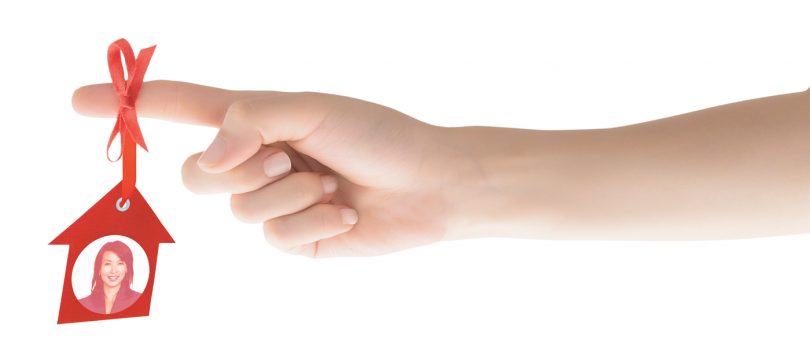Create a Top of Mind Awareness plan to keep a returning client base.
By Michelle Huffman
You may have seen the sobering statistics: Most clients don’t work with the same REALTOR® they used once before.
According to the most recent NAR Profile of Buyers and Sellers, only 11 percent of buyers and 25 percent of sellers use an agent they’ve hired before. It has little to do with on-the-job performance—more than 85 percent of both buyers and sellers say they would recommend their agent. So why don’t they come back?
They forget.
Staying top of mind with clients, vendors, friends and family makes a huge impact on your bottom line. Developing a streamlined Top of Mind Awareness marketing plan—we’ll call it TOMA for short—makes the difference between churning through new clients year over year and having a client base that comes back to you.
Start with Consistent Branding
Your brand should include basics like a headshot, bio, logo, color scheme and font, but also a mission statement and identifiable core values. You define your value, and then teach customers to recognize that, says Pat Zaby, CRS, broker/owner of Pat Zaby & Associates and owner of InTouch Systems.
Build your base
Beside past clients, add some of these connections to your database as you implement a Top of Mind Awareness marketing plan.
Orphans
Orphans are buyers who closed on one of your listings. Though they may be represented by another agent, most people are left behind by their agents (not using TOMA). By keeping in touch with these “orphans,” they can easily become your clients when it comes time to sell.
Meet-up friends
Kimberly Cameron makes all the agents in her office join two MeetUp.com groups. One is a group called the Water Walkers, who walk against the current of the lazy river at a local pool, and another is a Stitch and Ditch knitting group—these are fun and easy ways to expand your network and do something new.
When designing your brand, think about Target’s simple, consistent logo and colors, says Kim Knapp, CRS, of Coldwell Banker Vanguard in Fleming Island, Florida. Also make sure your headshot is consistent and up-to-date.
“Your face needs to be the same all over the place,” she says. “If it doesn’t match what’s on your website, and that doesn’t match what’s on Facebook, and that doesn’t actually match your face, you need to fix that.”
Your bio also shouldn’t be your life story. Knapp, also a CRS Certified Instructor, recalls a particularly savvy buyer who said she wasn’t surprised when a deal was going south, because the listing agent’s bio was full of self-serving platitudes. Ironically, that same client had hired Knapp because she connected with her personable bio.
Quick tip: Keep a list of all the places where your headshot and bio exist and reference that list every time you make a change.
Plant Referral Seeds
Even if you do a great job with a client, or you have a great relationship with a vendor, the referral is not an automatic thing. Knapp says that even her husband, who stands to directly benefit by referring her, doesn’t pounce on every opportunity.
So have a scripted TOMA plan to plant the seeds of referral with clients and vendors (and maybe with spouses, too).
With clients, Knapp suggests you say this:
- “Can I ask how you got my name? My business is primarily referrals so I’d like to thank anyone who referred you.”
- “My goal is not just to get your listing, but have you be so satisfied with my service at the end that when someone else says they’re interested in listing their home, you need to say, ‘You’ve got to use my agent!’”
With vendors, Kim Cameron, CRS, BH&G Real Estate Preferred Properties in St. Louis, suggests this:
- “I’ve trained my vendors along the way, from my carpet cleaner to my contractor, to look for buying signs and selling signs and always keep me top of mind.” Her insurance agent asks during his annual review if the client is moving in the next 12 months. If her painter is asked to repaint a whole floor in neutral shades, he knows to ask if the client is moving—and to refer Cameron. In return, she refers her clients to them and invites them to client events where they can connect with potential customers themselves.
Consistency Is What It’s All About
Knapp knows that consistency is ultimately what pays off when remaining top of mind. Between November and January she sits down and develops a plan to touch people in her sphere of influence throughout the year.
“It takes about 30 minutes to do the plan; implementation is the hard part,” she says, adding that she does as much in advance as she can. Her goal is to be consistent enough with touches—pop-bys, emails, BombBombs, newsletters—that if someone doesn’t hear from her in 12 months, they wonder where she is.
And consistency means giving it time. Zaby says he keeps people on his touch list for at least 10 years. He also plans ahead, creating a bank of content he can distribute when necessary, automates what he can and sets up calendar reminders to keep him on track.
“Most people give up in three to five attempts, but conversion happens after six to 12,” Cameron says. She plans 18 touches in the first 30 days of adding a new prospect to her sphere.
If we could really take the idea of Top of Mind Awareness down to its most basic element, it would be this: Consistency. No matter what you do, do it consistently. 
If developing a TOMA plan sounds like something you need, take a deep dive on the topic with our one-day course, Top of Mind Techniques to Boost Your Brand, launching this fall. You can also take 30-Day Top-of-Mind Awareness (TOMA) Turnaround at NAR’s Conference and Expo. The course happens at 1:30 p.m., Nov. 5, at the McCormick Convention Center West Building. Add the event to your Event Planner at bit.ly/2srnCAy.








